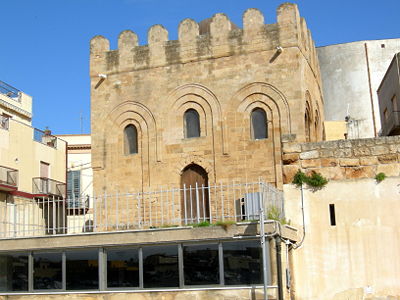MAZARA DEL VALLO
Along the Southern coast of
Western Sicily, lays Mazara del Vallo, which has always linked
its existence to fishing and marine commerce. Even today,
fishing is the dominant economic activity.
The area was inhabited since Neolithic times due to the sea
and the river.
The first urban settlement was however, desired by the Phoenicians
(9th Century BC), who made Mazar (a significant port in Fenicio)
a port of call for their marine traffic.
Mazara del Vallo then became a Greek polis (city-state) run
by Salinunte and after the destruction of Segesta in 409 BC,
was taken by the Carthaginians in 406 BC. As a result of the
aggressive and expansionist politics of Dionysius I, Mazara
passed under the dominion of Syracuse for around 20 years
until 378 BC, when it was re-taken by the Carthaginians.
In 210 BC, it passed hands to the Romans and became a Castrum
(military defence land) and saw a period of development during
Imperial times.
It then saw the arrival of the Vandali and became part of
the Ostrogoth Reign, which was then cancelled by the Byzantines
with the Greek-Gothic War (535-553AD), on the orders of the
Emperor Giustiniano I and carried out by the much respected
General Belisario.
After many dark centuries under the Eastern Roman Empire,
the Arabs arrived in ‘827, and from then on began conquering
all of Sicily. During this period, the City flourished economically
and took on its classic Arabic town-planning system with quadrangular
walls and narrow passageways. It flourished so well, that
Mazara became a Arabic bastion and the main object of conquest
by Ruggero d’Altavilla, who conquered the whole region
(1072) and made Mazara a seat of Norman Parliament in Sicily
(1097). Shortly before, the City had become an Episcopal and
construction of Cathedrals began.
There are numerous places of historical and architectonic
interest in Mazara del Vallo: the Norman Cathedral in Piazza
della Repubblica. It was built on the site of a previous mosque
and restored in the Baroque era; the Santa Caterina Church
dating back to 1318, but also re-adjusted during the 18th
century; the Sant’Egidio Church (1424), seat of the
Sant’Egidio Museum; the Norman Church of San Michele
(11th Century) and San Nicolicchio (1124).
There are other churches a little further away such as: the
church of S.Mari del Gesù (15th Century) with its beautiful
Gothic portal and the church of the Madonna dell’Alto,
built in 1103 on the wishes of Giulietta d’Altavilla,
daughter of Ruggero II.
In 1998, 400 metres under the sea, a fisherman discovered
the famous Satiro Danzante (Dancing Satiro), a statue which
probably belonged to a court of Dionysius, with a rare and
evocative beauty. Today it can be admired in the Regional
Museum of Sant’Egidio.
|
